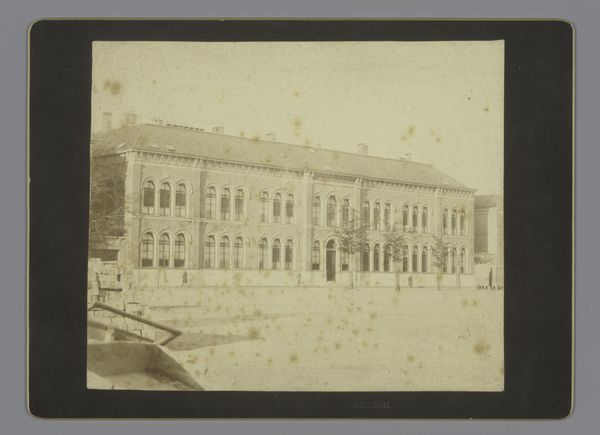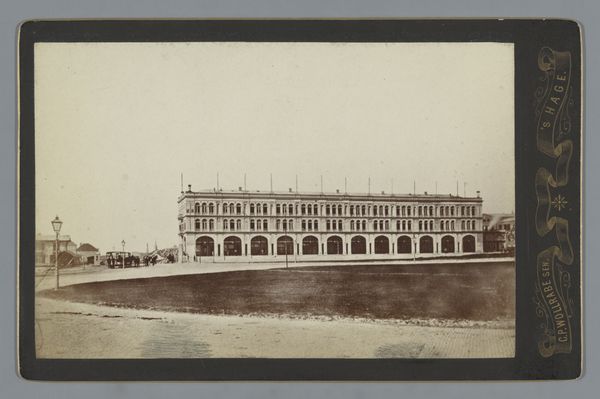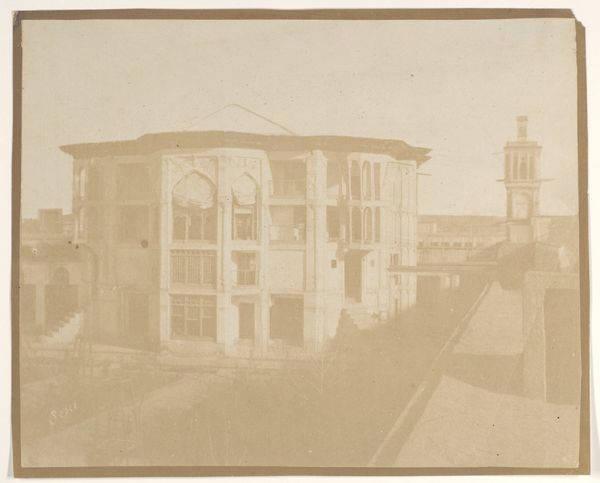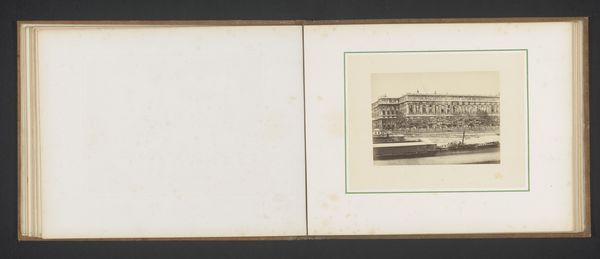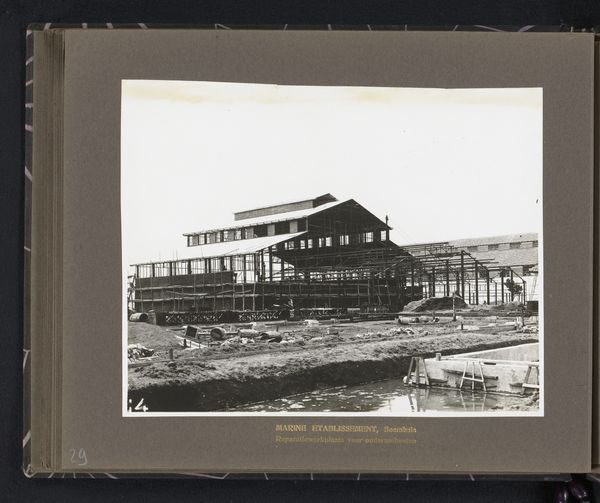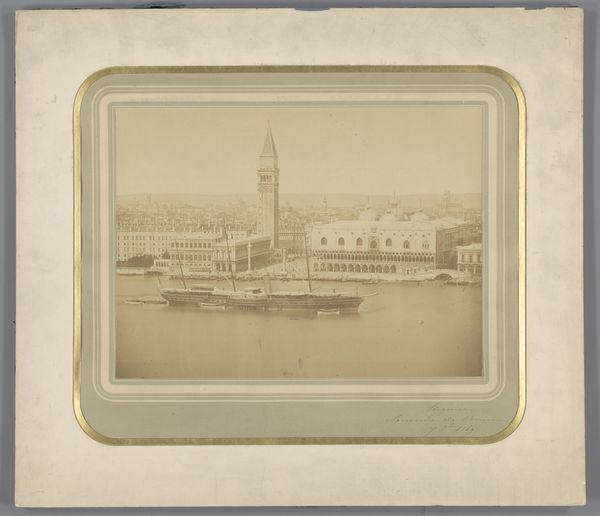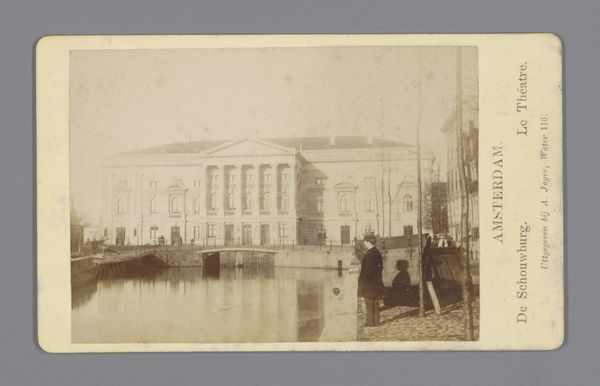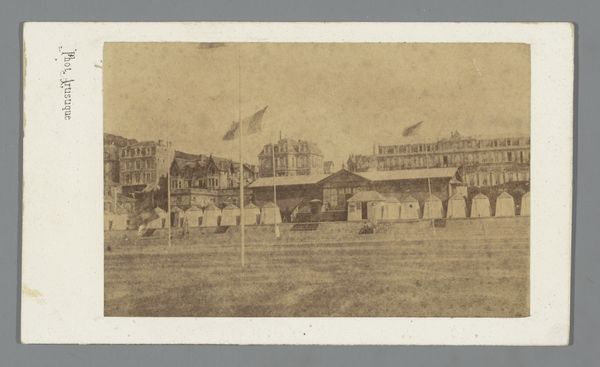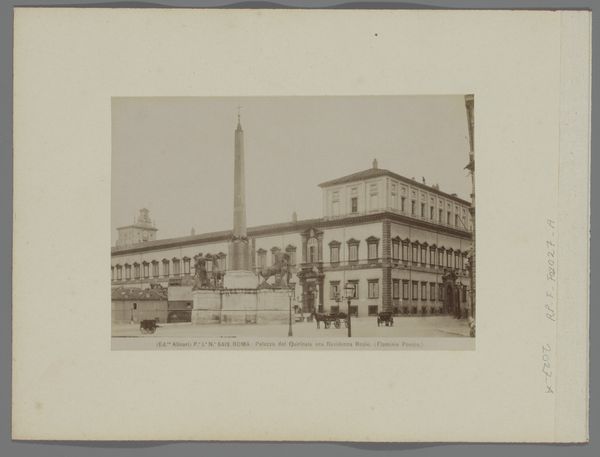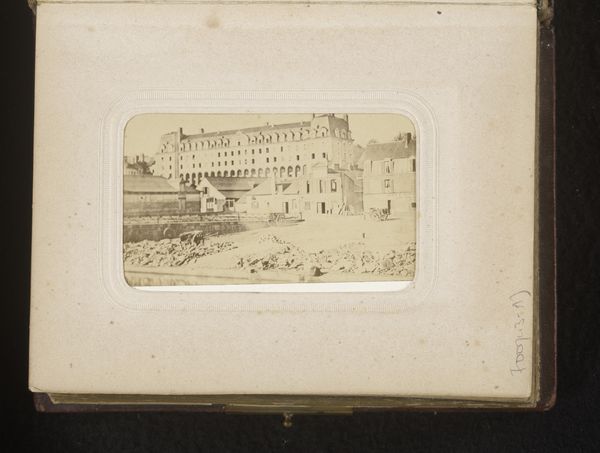
print, photography, albumen-print
# print
#
photography
#
orientalism
#
cityscape
#
albumen-print
Dimensions: height 212 mm, width 276 mm, height 346 mm, width 453 mm
Copyright: Rijks Museum: Open Domain
Editor: So this photograph, "Havenkantoor, genoemd het Palais Hollandais, te Port Said," taken sometime between 1870 and 1910 by C. & G. Zangaki. It's an albumen print. The repetitive arches give it such a grand, almost intimidating feel. What stands out to you? Curator: The albumen print process itself is key. Consider the labor involved, from preparing the light-sensitive emulsion to the careful development. This wasn't a snapshot; it was a constructed image reflecting European ambition. What do you think that says about this moment? Editor: I guess the "Orientalism" tag makes more sense now. It's not just a record; it's shaping a narrative. The building materials themselves, the imported technology to build it, even the ship barely visible in the back... it all points to resource exploitation. Curator: Exactly! The very act of photographing, producing, and distributing these images was tied to global power dynamics and consumerism. How do you think these prints were circulated? Were they aimed at European audiences, reinforcing colonial views? Editor: Definitely feels that way. The way it’s framed almost like a postcard, romanticizing Port Said... probably aimed to stir up excitement for people back in Europe about international trade. It's crazy how the process reveals layers of meaning I wouldn't have considered otherwise. Curator: Seeing photography not just as representation, but as a commodity deeply embedded in industrial and social networks is really eye-opening, isn't it? It challenges the assumed objectivity of the medium. Editor: It does! Now I’m thinking about the labor, trade, and even the chemistry behind this one image in ways I never had before. Thanks for shedding light on it!
Comments
No comments
Be the first to comment and join the conversation on the ultimate creative platform.
